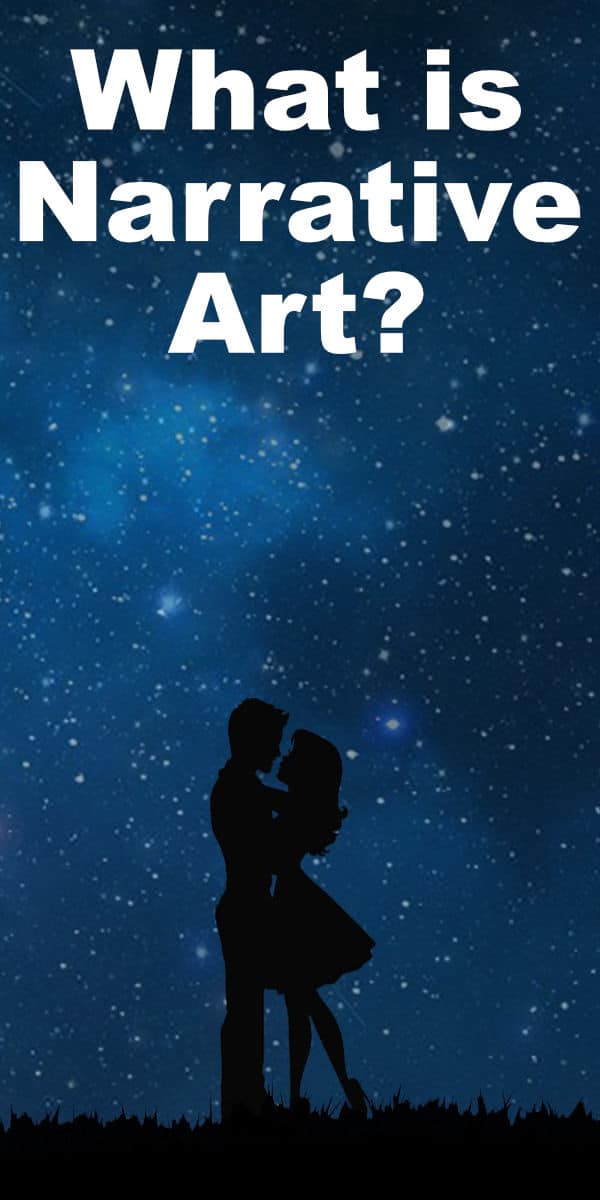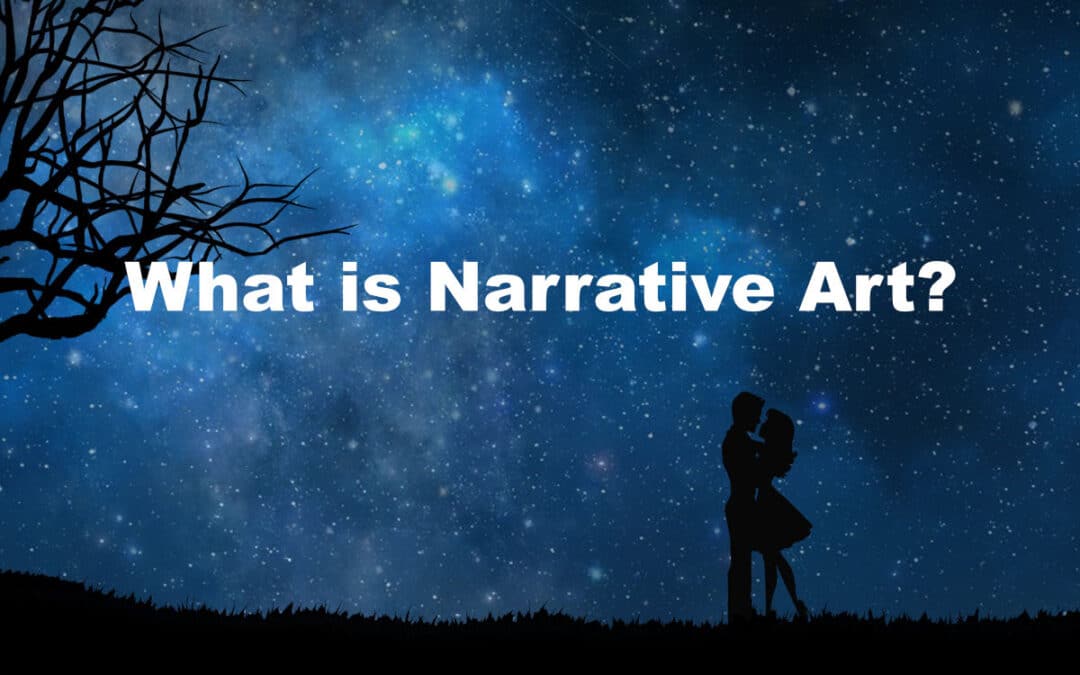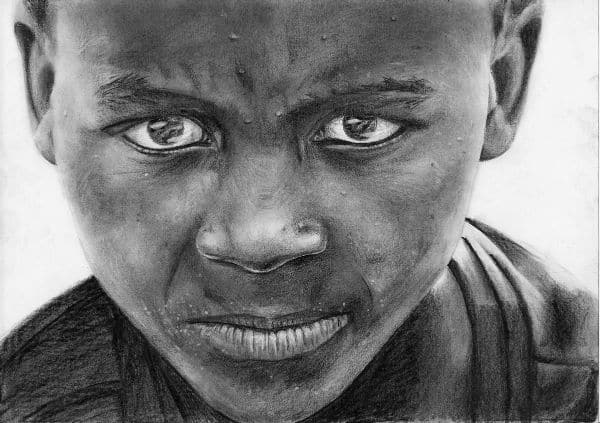and How to Create It
The answer to the question what is narrative art is by no means cut and dried and depends a lot on the viewer.
What Narrative Art Isn’t
Narrative art is not a painting style.
What Narrative Art Is
Narrative art refers to the content of the artwork, in other words, what is being painted not how it is being painted.
Narrative art is art that tells a story.
This can be to show a moment in time or infer a sequence of events that happen over a period of time. A narrative artwork will usually evoke an emotion in the viewer.
Narrative Art is Representational

Narrative art usually falls into the broader category of representational art meaning the images, elements and symbols used are recognisable in the real world.
This applies even if the narrative is a fantasy. (If you painted a story about a unicorn it could still be considered representational art if certain other criteria are also met, even though you are not likely to encounter a unicorn in real life as it is part of a mythology which is understandable and recognisable to your viewer).
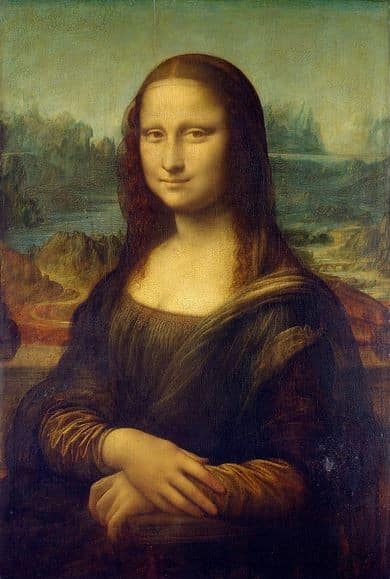
Not all representational art is however narrative.
A portrait may be representational (it contains real items like a person) but it may not always allow the viewer to construct a story.
An example of this would be the Mona Lisa. In this painting the subject is merely sitting in a pose and we can’t infer any action, event or story from it.
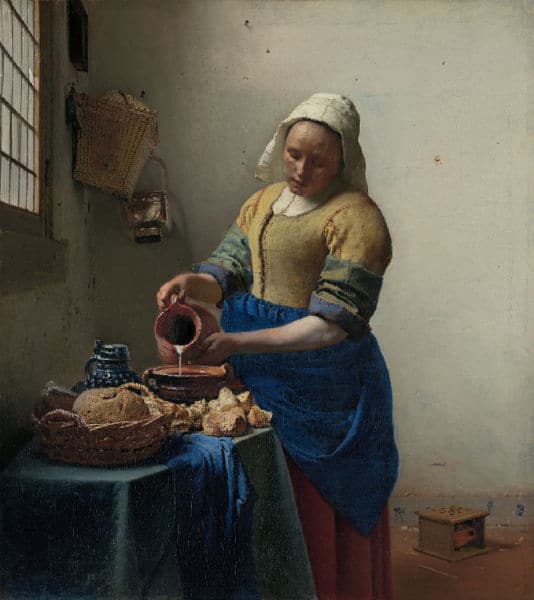
If however the artist has painted a portrait in the context of the subject’s life, then it could well be narrative.
A good example of this is The Milkmaid by Johannes Vermeer. When looking at the painting we can infer that she is possibly preparing a meal for the household. From the scene and the title we know she is an employee working in the kitchen. Her sleeves are rolled up so we can tell that she is a hands on type of person, etc.
Narrative Art is Sequential
A further criterion that an artwork described as narrative should meet is that there is a sequence of events in the story – past/present/future.
Even if all three are not depicted in the artwork, they must be able to be inferred. This seems to be the most difficult of the criteria to meet and many artworks classified as narrative would arguably fall short on this criterion.
The past and future events may be well-known to one viewer through familiarity with the subject the art depicts, while not evident to a viewer who does not share this knowledge i.e. this criterion may depend on the culture of the viewer.
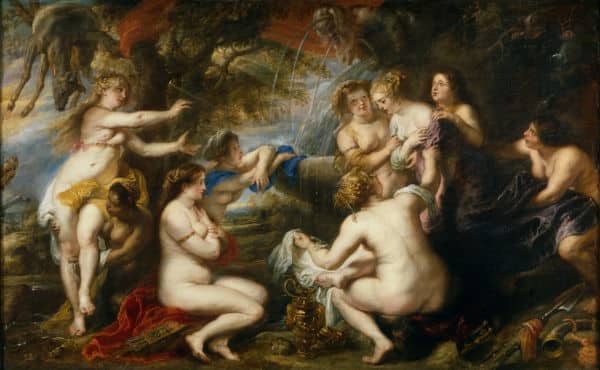
For example Greek mythology was the subject of much narrative art popular long ago. This form of narrative art could only meet the criterion of being sequential if the mythology was familiar to the viewer.
If the viewer did not know the mythology, then the knowledge of what went before and what is likely to happen next would be absent and the art would be seen as representational but not narrative.

The narrative in the painting Andrew Wyeth’s “Christina’s World “is immediately evident irrespective of cultural differences.
The struggle for existence by the crippled girl, her connection to the house and what has gone before and what the future will be are all easily accessible (although each individual viewer’s inferred story may vary slightly according to the viewer’s own personal life experience).
Narrative Art is Non Static
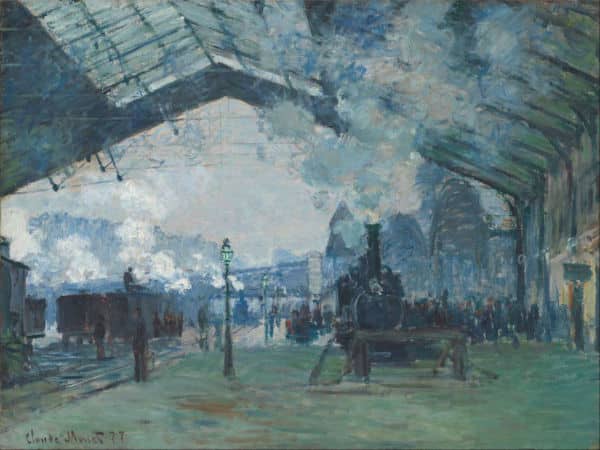
Narrative art always included some kind of action. A static object, after all, cannot tell a story.
Monet’s “Arrival of the Normandy train” is considered by many art aficionados an example of narrative art. Yet on closer examination the sequence of events is not evident
It would seem that how, or even if, the viewer perceives a story or narrative in an artwork, depends on their own narrative context. We all live within our own narrative and our world is primarily subjective – we create our own truth based on our own narratives.
I would have liked to see a person as the focal point in this painting as that would have created a better narrative painting.
We would then be able to infer a lot more action and movement as well as actions that have happened (person packing bags, saying good bye, etc.) and actions that will happen in the future (person arriving at their destination, going on to do whatever they have traveled for like attending a meeting or visiting a relative).
What is the History of Narrative Art?
Pre 20th Century Art
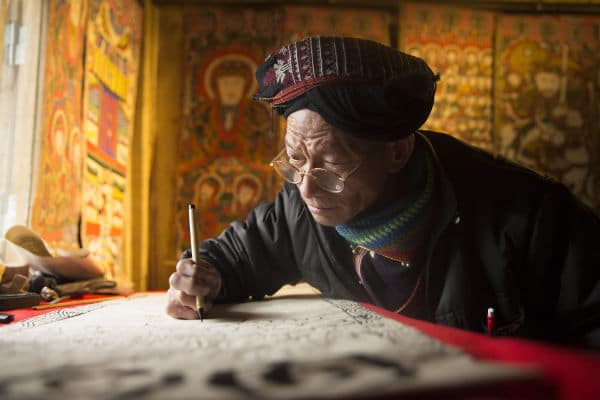
People have been creating art for a long, long time. Narrative art is seen in paintings on the rock walls of caves dating back to the earliest humans.
As civilization progressed, narrative art continued to play an important role. Most of the population was illiterate so pictures were the only way of getting information to the masses.
Art was determined by the wealthy and influential people who could afford to pay for it. It was used to glorify leaders in the eyes of their followers, (showing only their best aspects).
It was used by the Church to encourage moral behaviour and discourage potential sinners.
Noteworthy historical events like wars were recorded in narrative paintings for future generations, usually by the victors. The narrative in these works was clear and often biased.
Dawn of the 20th Century
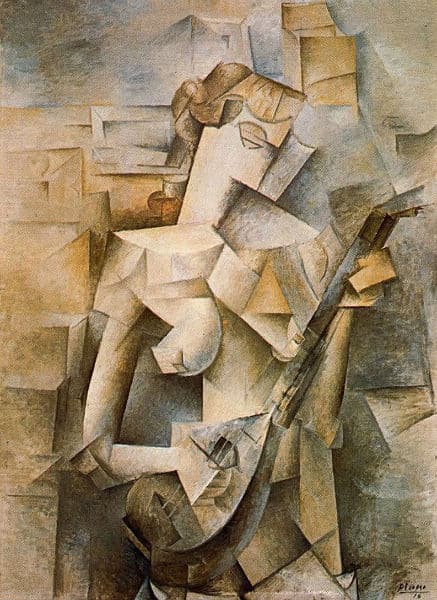
Abstract art made its appearance in the 20th Century. There was no longer need to produce art for the purpose of glorifying individuals, for religious purposes or for recording historic events.
Once art was set free of these constraints, new forms of art like Cubism in which familiar shapes were broken up into geometric pieces and Abstract Expressionism, which explored feelings and emotions through colour and brushstrokes came to the forefront.
They were a push back against the era of realism and narrative art that had preceded it. These modern artworks did not need to tell a story so there was no need for an implied narrative.
But, as usual, the pendulum swung the other way and by the 1970s there was a re-appearance of realism and by the 1980s even narrative art was gaining respect again.
People will always love a story and there are painters of note who have returned to, or never deserted, narrative art in particular the dramatic, emotionally charged and provocative approach of Pre Raphaelite artists.

A great example of modern day narrative art is the work of Neo Rauch. He combines ambiguity and complexity to create his powerful and disturbing visual narratives.
In this painting “Der Rückzug” (The Retreat), he visually narrates his unease and threat he experienced living in East Germany before the Berlin Wall fell.

Narrative art outside of fine art is deeply entrenched in our way of life and has never fallen out of favour.
It is found in book and journal illustrations, newspaper cartoons, photojournalism, comic books, online cartoons, manga etc.
How to Create Narrative Art
Artists love to tell stories and people love to hear (or in this case see) stories.
Unless you paint purely for enjoying the process and not for anyone else to see, (or on commissions) then you probably already have a narrative or story that interests you. You may not even be aware of it yet.
You may already have a hint because you choose it more than other subjects when deciding what to paint.
Analyse why this favourite subject moves you and create images to translate it into a story for your viewers.
What gets you fired up is unique and can change from day to day. One day it could be the beauty of the natural world; the next the pathos of the human condition; the next the comforts of home. It could be real life or imaginary.
You can get your message across in one painting or you could paint a series of paintings that explore different aspects of your theme.
Less is More
Try to get down to the bare bones of what moves you and what you want to bring across. Lean towards keeping it stark rather than adding unnecessary decorative elements which could obscure your message.
In this Child Portrait Drawing the scene is kept very basic, yet the look in the eyes tell a very specific story. The addition of a few specks on the face are enough to suggest that the boy is playing in the sand pit. From the info available in the artwork we can form a narrative inferring that maybe another child tripped him and he fell face first in the sand. Now he is angry and maybe on his way to tell his Mum.
We could of course infer a totally different story from the info in the drawing. Maybe he has been happily playing with friends he has just met on the beach, but they have just run off without him to go buy ice cream.
See what stories you can infer from this image….
Use Words to Assist You
As we know people have their own internal narratives which may make it difficult for them to see your narrative. We have just experienced this with the drawing of the little boy.
To ensure the correct narrative is heard with your artworks, create an artist’s statement explaining what moved you to create your artwork. Invite the viewer to participate in your visual narrative.
You won’t always have the opportunity of displaying an artist’s statement but when you do use it.
Give your painting a title. A title to a painting is like shorthand for an artist’s statement. It suggests a story and invites the viewer to participate. Don’t just resort to the self-evident and obvious, be tantalizing in your choice of name to make the viewer engage and involve him or herself.
See what interesting title you can come up with for the drawing of the little boy which suggests at the story you came up with for your narrative.
Use Technology

It may seem a daunting task to evaluate what really moves you and to make yourself vulnerable by expressing this for others to see and inviting strangers to share in your emotion.
Modern technology can come to your assistance here. Collect images of what moves you. With your cell phone you have the opportunity of capturing candid snapshots of life that you can combine using Photoshop or other graphic manipulation programs into the bones of an idea that you can then flesh out in your medium of choice.
Store these images in categorized folders on your computer which makes them quickly accessible and easy to find later.
Let’s use the sky scene above as an example. Maybe you have taken this photo while on holiday and want to turn it into an artwork.
Although the scene is very pretty it doesn’t have a narrative. In order to add a narrative you could add many different objects to the scene like the silhouette of a Mom and baby elephant walking towards the tree, a couple in embrace or even a UFO coming in to land.

Compare the original image and the modified one above and you will see that the figures have created a narrative in the scene which allows you to tell a story in your final artwork.
If you had to paint the scene with and without the figures, which of these two will sell first – the one with the figures of course.
We not only love a good story, even better one from our own imagination, but the added figures also creates an emotional connection with the viewer.
Convey Your Passion
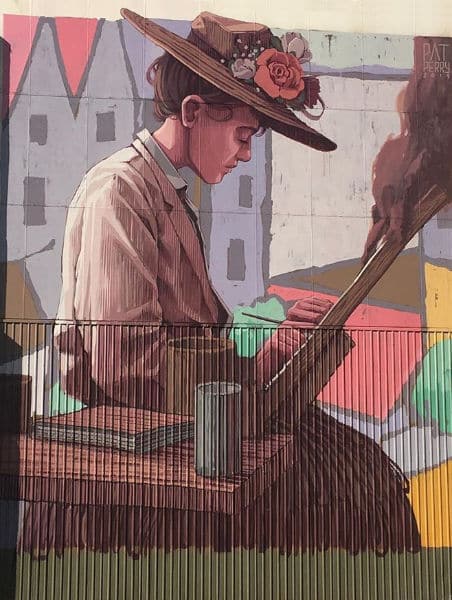
In this amazing mural Pat Perry has used passion, emotion and symbolism to add a narrative to this painting.
The painting is of one of our local artists from the 1920’s who like to paint in a more contemporary style. This style was however not well received due to the conservative attitudes towards art at the time. Her conservative father even burnt her nude paintings in protest, hence the burning painting in the scene.
Her clothing and sullen expression also help to convey the narrative of the pain and difficulty in expressing her own passion on the canvas and the conservative attitudes of the time.
Use Your Imagination
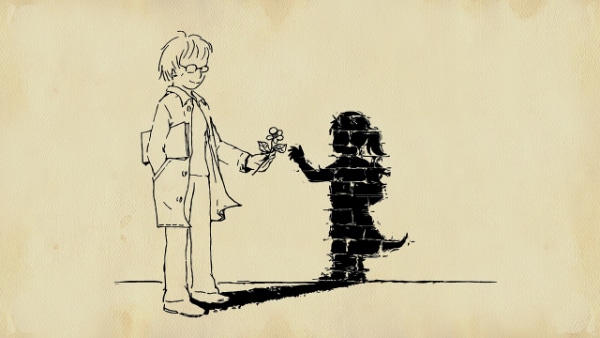
As mentioned at the start of this article, although a narrative artwork usually contains real objects, these objects could also be imagined.
Here you can see the perfect example of an imagined narrative.
Don’t be afraid to think outside the box to tell the narrative you want to convey in your artworks.
Have fun, experiment and let your imagination free!
Conclusion
Narrative painting are infinitely more popular that paintings that are merely a record of what the artist saw at the time.
Narrative paintings tell a story that convey and evoke emotion in the viewer as well as spark their own imagination to complete the timeline of what went before and what will happen next.
This keeps the viewer intrigued and interested in your painting.
Create a narrative in your paintings and you will see how much more people like them and how much quicker they buy them.
Good luck.
Pin Me
